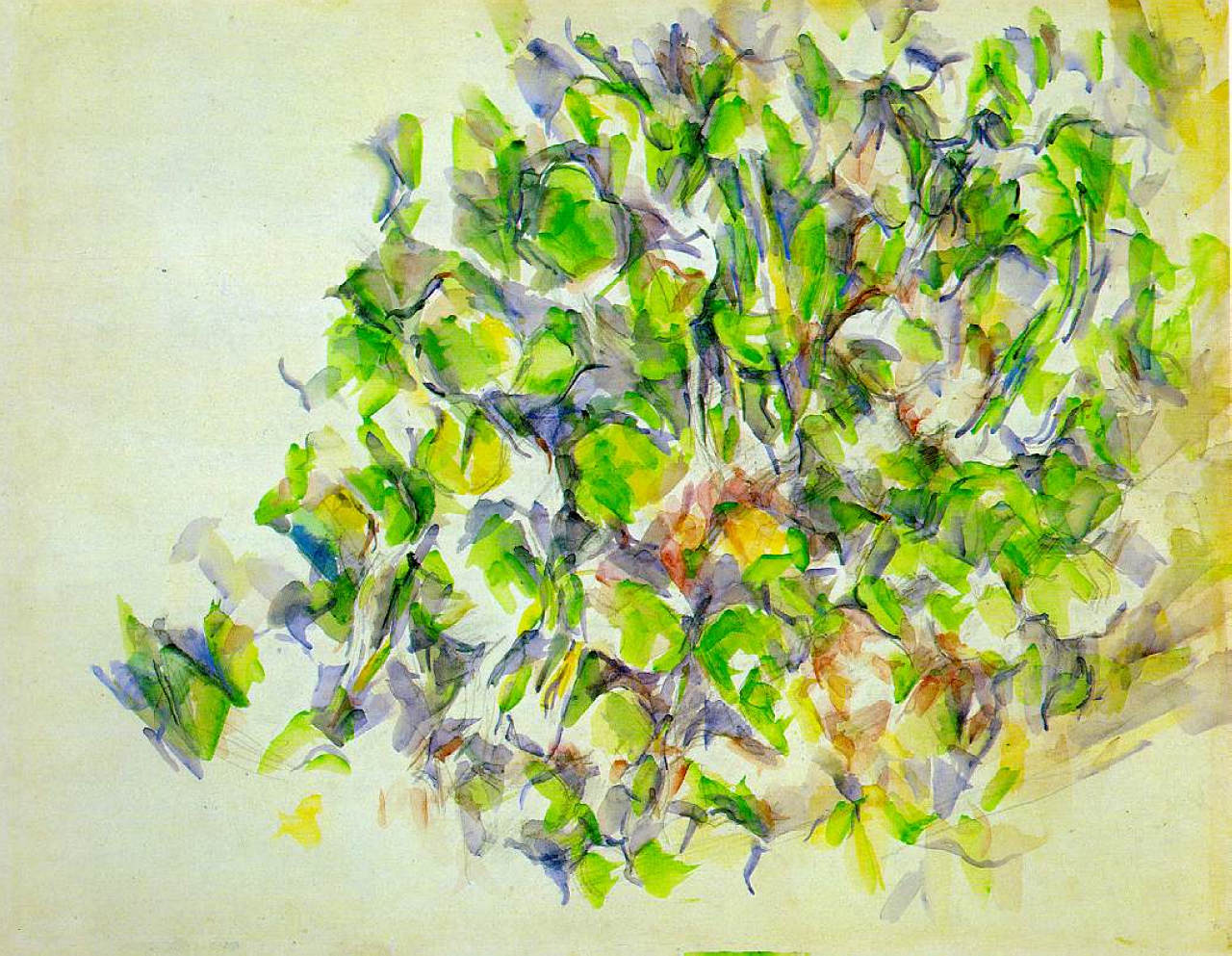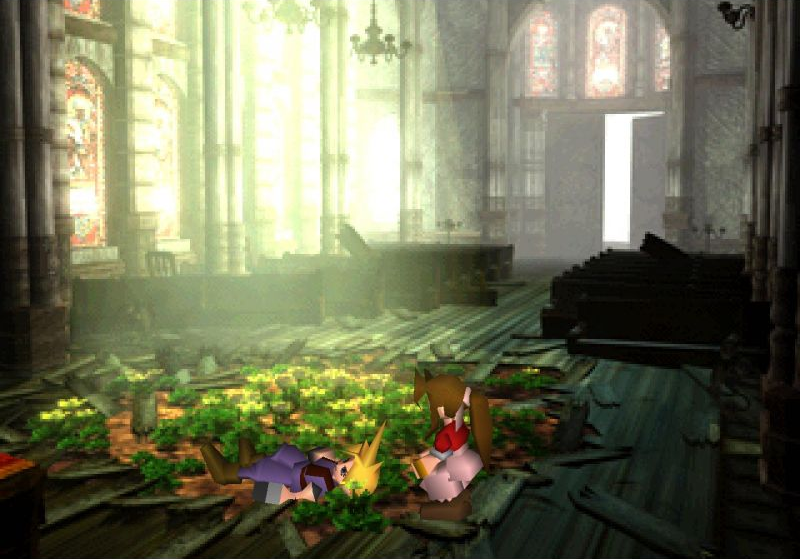
The relationship between object, subject, and representation in any visual art is rich enough that a good commentator might come up with new things to say about it for an entire professional lifetime without repeating themselves or plagiarising their peers. In painting, usually, there is some form of representation going on. A painter sees, and uses a model of visual processing to render her idea of what might be going on outside her skull again, in her own mode: flattened. This model depends on both the painter’s individual proclivities and the social conventions and technologies available to them. Sometimes the development of these models is treated as a sort of scientific project, as in the case of the impressionists who conducted systematic surveys into the phenomenological properties of light in order to better represent the way their scenes behave in light, rather than what their scenes look like.

Film is just as interesting. Though the technological condition of cameras, film, and after-effects certainly modify the form and content of film, as per apparatus theory, the usual business of creativity in film tends to find its emphasis in the construction of novel situations, which the camera then films. Almost no filmmaker goes into every project with an idea, first and foremost, of how their mode of representation is likely to express something in itself, which is in a sense what every contemporary painter does. When film does its most revolutionary work, in the sense that it revolutionises what we are capable of seeing and representing, it does so via the compositional choices in arranging material in front of the camera, and in organising the linear time of the film according to the language of the edit.
What then is happening in these YouTube videos?
These videos are from a lovely treasure trove of a YouTube channel called ClassicsOfGame. As of the time of writing, there are 151 short videos, ranging from less than ten seconds to a little over three minutes, uploaded irregularly since 2011. How to describe the contents of these videos would challenge any writer, but as dryly as possible: they consist of footage recorded from strange video games. The video games themselves beg for exposition which the channel refuses to provide—most seem to be Japanese, and seem to have been made from the late 80s to the mid 00s with only rare exceptions. The content of the footage is surreal, sometimes unsettling, often hilarious. I wonder: is the word “footage” striking anyone else as a bit conspicuous in this paragraph?
I’m describing it as “footage” because I don’t know what else to call it. In a sense, the things are no different to home videos. Cheap commercial equipment uses some sort of recording device to take in the signals of light that are fed to it and renders these signals as frames of video. The space the camera ‘looks at’ is virtual, yes, but the operator of the recording equipment still has a good deal of control over what it is they can capture. They usually have a rudimentary control of the camera in the virtual space, and they always have complete control over when to start and stop recording. Every ClassicsOfGame video consists of one unbroken shot from the video game, as if to say: “this is documentary footage”, but the channel’s anonymous creator still chooses which games to record and has to play them to find these images. Who is the primary artist involved here? Is it ClassicsOfGame or is it the developers of the games that are recorded?
It’s a bit of a nonsense question: no one is a primary artist anywhere in any case, there is no such thing. But nonsense has its own sort of logic. The logic of nonsense is almost the mission statement of the videos themselves: these are confusing and broken products. They are entertaining or insightful or beautiful for certain reasons, but the origins, relative tendencies, and potential sincerity of these reasons are obscure. No one seems to be in on the joke except the channel operator and their viewers, and yet it always seems as though the real aesthetic power in these situations is held by the anonymous artists and programmers that developed these strange images. There is a certain sort of nobility in their remote anonymity. The tacit knowledge, barely subcutaneous, that we are seeing the handiwork of amateurs and professional failures, as their failure to satisfy the intersubjective standard of marketable entertainment products means that the vast majority of the artists who contributed to these systems are no longer working in games. They produced self-contained worlds that depend on novel rules for the processing and arrangement of images. Worlds which might, if not for some inscrutable eddies in the fluctuation of history, have been beloved by thousands for their beauty.

When describing ClassicsOfGame in the past I’ve struggled to counter insulting analogies. When I made a list of my favourite films a few months back I included ClassicsOfGame as a collection, which seemed to exasperate certain people. It’s certainly fine to love those videos, they said, but they’re not films. They’re just recordings of games. That would be like calling footage of someone walking around an art gallery and looking at paintings a film, someone said.
The easy response to this is to just assert that yes: of course an art gallery recording would be a film. One could very well envisage that being a great film as well, if the material were handled with any tact. But the more important objection seems to be over some anxiety around medium specificity. The relationship that video games have with subjects, objects, and their representations is extremely strange, because that medium is the result of an extremely delicate aesthetic endeavour undertaken in an extremely rapid period of maturation. It was the cack-handed grafting of millenia of conventions about games, and their mechanics and logic, with the developing primitive imagery of computers. Early on, artists stumbled on the insight that between the game as competition or gambling arena and the logic of computation was a space where a novel language of subjectivity might be developed.
Stories could be told, but perhaps more importantly modes of motion could be developed which allow a player to control a space the way they control where their own body can move in the world, and what their eyes can look at. Artists could develop a sort of communicative device between the player and the world, where the world is capable of influencing the player and the player is capable of influencing the world. The development of “game mechanics” as an expressive machine was a way to marry the cathartic motion of virtual subjectivity and a new set of idioms in digital art. When this new expressive machine came up against the concrete and universal problem of technical and artistic illiteracy, tension appeared. In rare cases, visionaries created works of rare and steely treasure. In many more cases, studios created things which will remain unloved by most who touch them.
A documentarian exploring these machines and virtual spaces finds that there are unbreakable rules that limit the scope of their work. A recording of Super Mario Brothers cannot involve the camera rotating to face Mario directly as he runs. This is true of traditional film as well of course. It is impossible to film an individual photon moving from its light source to its destination. It is impossible for a camera to film itself being turned inside out. It is impossible for a camera to phase through an actor’s head, filming his brain and the backs of his eyeballs, before passing out the other side with the head unharmed. This is not a question of control, a question of the ability for the artist to make novel arrangements in front of the camera. Both within the game system and in meatspace, there are limitations to what is potentially footage and what is not.
If we watch these videos bearing in mind that they are essentially the arrangement of images and symbols according to a novel logical system, then it seems to me that two important modes of expressivity emerge. The first might be described as “cyber-surrealism”, and the second might be described a sort of shattering of grace.
Cyber-surrealism is hyper-active and loud. Recent manifestations of this aesthetic can be found in various nonsensical memes, apparently designed to intentional provoke and confuse older people. A more aesthetically mature picture, though actually older, can be found in the clown fractals of Nico Nico Douga’s MAD videos and the YouTube Poops that are descended from them. Like surrealist painting, cyber-surrealism is usually semiotic: culturally relevant symbols are subverted or combined in semantic mud pies, and the creation of novel symbols and forms is only ever accidental. Unlike the work of the surrealist painters, who made the juxtaposition of absurd imagery and the delicate virtuoso technique of bourgeois painting a combination of meaning to serve political and semantic ends, cyber-surrealism is almost exclusively superficially ugly. While digital art increasingly gives its artists more and more sophisticated tools that make precise and beautiful renderings easier than ever, the rejection of these tools serves a sort of meaning in itself.
It is not a coincidence that this aesthetic is so closely linked to the social and aesthetic tensions of 20th century Japan. Japan has continuously re-invented its own self image according to the tides of history while maintaining strictly conservative propensities for aestheticism and national myth-making. A culture which is characterised both by its willingness to conform to world hegemony (its own adoption of Chinese high culture was mutated over centuries and then thoroughly warped by the rapid introduction of Western ideas after the Meiji Restoration) and in its steadfast refusal to admit that it is anything but a proudly unique and ancient culture. Indeed, it posits itself as superlatively uncompromising.
When I say that “it posits itself”, the it I refer to is not Japan collectively, but the Japanese ruling class and their abstract cultural hegemony. Japanese mass culture, characterised by the struggle for the Japanese proletariat to come to terms with the contradictions of their national myth, is awash with the surreal. Not just so, but the hyper-active surreal: positioned as the inversion of the mythologised bushido, Zen, Shinto, tea ceremony, and haiku—invented traditions in their 20th century sterilised and minimalised modes. Cyber-surrealism depends on this same sensibility: the rejection of minimalism and good taste in favour of self consciousness. Where minimalism and aestheticism obfuscate the ugliness of their material condition, cyber-surrealism is self consciously a product of an ugly age.
If grace is the aesthetic property of ease of movement, then the observation of a moving image according to this principle means taking in the image as a fleeting moment belonging to a broader unity of movement. Watching a dancer move gracefully means that they move easily, according to the motion their body suggests. Every gesture is made so that it seems to be implied by the gesture beforehand: the thing seems natural or inevitable. Your brain extrapolates a wider structure of movement into the projected space-time. Sometimes the dancer breaks this projected movement with a sudden twist or jerky motion. It is this interplay of projected motion and sudden imminence that characterises the continuum of grace.
The video game as a projected space, when it works well, completely conforms here. The rules of its code dictate a certain determinism of motion. Characters move according to a clear logic, along perceptible paths. It is this property that makes it possible for games to have a sort of subjectivity to them in the first place. Even in the case when we are not given a viewpoint that is designed to place us inside the skull of our protagonist looking out through their eyes, as in the form of the first person perspective, good design can turn third person perspectives into vehicles for the exploration of catharsis in motion. Even a side-scrolling camera can facilitate the waking world melting away, to be replaced by the 1:1 identification with a crude avatar as a physical object within a physical world in moments of really tight and cognitively intensive gameplay.
The wonky dreamscape logic of ClassicsOfGame imitates the devices that engender that subjectivity, in momentary glimpses of clarity. But then, outside of those glimpses, the videos are in total characterised by a continuous shattering of these paths by incoherence. Characters move erratically, surfaces often give way to infinite digital voids, the physics of the game engines provide shoddy simulacra of gravity and friction that make the worlds feel hostile to the actors that have to live inside them. Inscrutability reigns. Given the role of the consciousness in justifying the semantic relevance of the things we pay attention to, it seems inevitable that, as a collage of manipulated semantic signs, the surrealist aspect of the videos is more emotionally immediate. It is more easily apprehended, but probably less intuitively felt, than what I think makes them so deeply unusual: their shattering of grace.
I am not certain how many game players have experienced this almost frightening replacement of viscera by digital vapour. In my time playing in Super Smash Bros. Melee tournaments I have found that, during the most intense sets, I completely lose the conscious experience of being in the room I'm in. For tens of seconds at a time the possible scope of my experience and attention is limited to the surface of the cathode-ray tube TV. In one recent set, I came incredibly close to beating someone regarded as much better than me, only to lose very suddenly in a series of cascading mistakes that took only a few seconds to play out. As I watched myself lose, I realised that in the intensity of the confrontation I had forgotten I had a body: I was startled by the feeling of my feet touching the inside of my shoes. ClassicsOfGame of course cannot reproduce this disturbance, but its movements produce these dislocations between natural continuum and atomised absurdity that are simultaneously discrete moments (as one flips a light switch) but persisting, in durée, as if one were seeing the light move around the room gradually without being sure if it is growing brighter or dimmer.
In the 1960s, neurobiologist Roger Wolcott Sperry amputated the eyes of an african clawed frog and then grafted them back in upside down. The frog has a remarkable regenerative capacity, and so the nervous system was able to re-establish a connection with the brain and the now upside-down eyes. Sperry hypothesised that the orientation of the eyes would remain consistent with its natural wiring pattern, even being reoriented. Sure enough: when a food source was presented to the right of the frog, its tongue would shoot left to catch it. When the food source was above its head, the tongue shot downwards.
Simulated cameras roam digital surreal worlds and provide us with grounding in a mathematically well defined space, but without the possibility of placing us inside the buggy, as it were. We are not privy to the usual sort of subjective experience, and are instead left inside a sandbox of immutable, deterministic code-laws without any possibility of control or familiarity. The translation of gaming idioms into this surreal document would be compelling enough, but this is not only the subversion of imagery and symbols, but a subversion of subjectivity as well. It is a sort of parody of the tracking and extrapolation of bodies in motion, which is the domain of the primitive brain. The frog’s brain.
Super Monkey Ball and the Catharsis of Motion
On the Internet